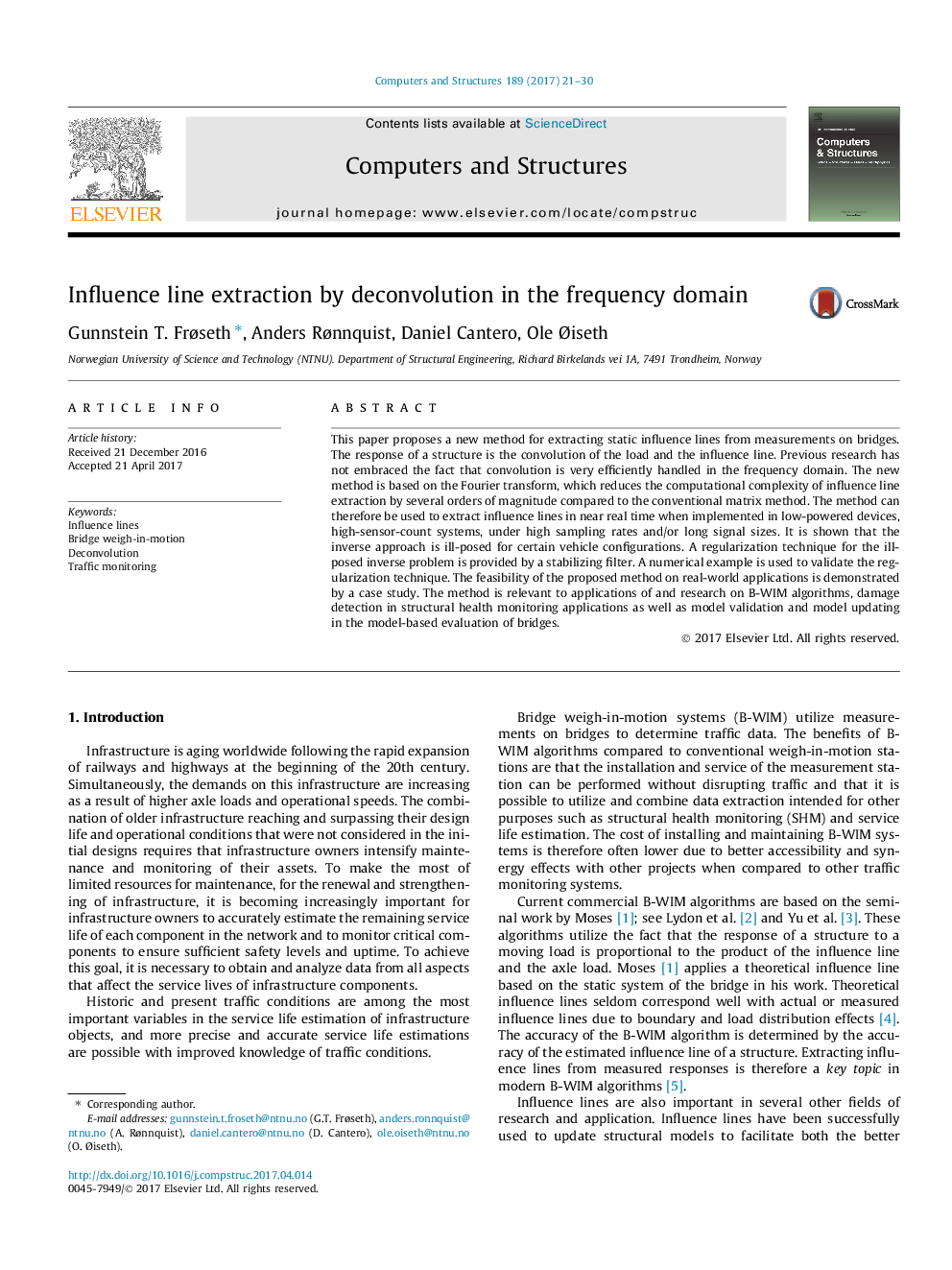| Article ID | Journal | Published Year | Pages | File Type |
|---|---|---|---|---|
| 4965716 | Computers & Structures | 2017 | 10 Pages |
Abstract
This paper proposes a new method for extracting static influence lines from measurements on bridges. The response of a structure is the convolution of the load and the influence line. Previous research has not embraced the fact that convolution is very efficiently handled in the frequency domain. The new method is based on the Fourier transform, which reduces the computational complexity of influence line extraction by several orders of magnitude compared to the conventional matrix method. The method can therefore be used to extract influence lines in near real time when implemented in low-powered devices, high-sensor-count systems, under high sampling rates and/or long signal sizes. It is shown that the inverse approach is ill-posed for certain vehicle configurations. A regularization technique for the ill-posed inverse problem is provided by a stabilizing filter. A numerical example is used to validate the regularization technique. The feasibility of the proposed method on real-world applications is demonstrated by a case study. The method is relevant to applications of and research on B-WIM algorithms, damage detection in structural health monitoring applications as well as model validation and model updating in the model-based evaluation of bridges.
Related Topics
Physical Sciences and Engineering
Computer Science
Computer Science Applications
Authors
Gunnstein T. Frøseth, Anders Rønnquist, Daniel Cantero, Ole Ãiseth,
